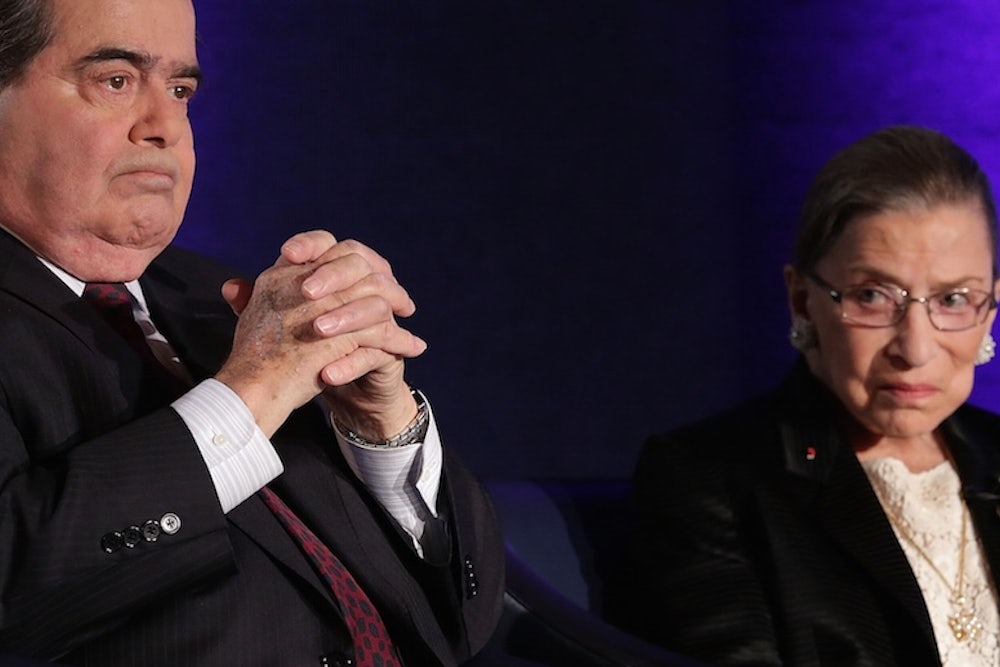I’m a longtime fan of Slate's Dahlia Lithwick and her coverage of the Supreme Court. But I have to admit that her recent article in The New Republic left me shaking my head a little. The premise of the piece essentially is that it is a bad thing that The Nine attended Ivy League schools, are “intellectually qualified in ways we have never seen,” “judicial thoroughbreds,” and “devoid of bad habits or scandalous secrets.” All of this, Lithwick says, leaves the high court “worryingly cloistered,” too sheltered to incorporate modern “realities in its jurisprudence.”
Don’t we want the best and brightest to serve on the highest court in the land? Let's consider the alternative: I’m not as sure, as the article laments, that the “political operators, philanderers, and alcoholics of bygone eras” were so great for the Court. Maybe Justice James McReynolds, a self-professed anti-Semite and bigot, was a hoot in the Court’s Friday conferences, but I doubt it. His refusal to speak to Justice Louis Brandeis, who was Jewish, probably created a little awkwardness.
I suppose we could look for less accomplished nominees for the high court. President George W. Bush’s nomination of Harriet Miers lasted almost a month before both parties urged her to withdraw. And after President Richard Nixon’s nominee G. Harrold Carswell was criticized for his lack of credentials, a senator famously argued in his defense that “there are a lot of mediocre judges and people and lawyers. They are entitled to a little representation, aren’t they, and a little chance? We can’t have all Brandeises, Frankfurters and Cardozos.” A few years after Carswell's nomination tanked, he was arrested for soliciting an uncover police officer in a public restroom.
Beyond the underlying premise of Lithwick's article, I had a few problems with her argument that “this Court has no use for real life.” Justice Antonin Scalia, she notes, “won’t read newspapers that conflict with his views and claims to often get very little from amicus briefs”; Chief Justice John Roberts “doesn’t believe that most law-review articles ... are relevant to the justices’ work”; and Justice Anthony Kennedy “spends recesses guest-teaching law school courses in Salzburg.”
Seeing the current justices on "The Today Show," "The Daily Show," and even "The View" disabused me of that notion. That the justices are “not-so-reclusive” has been news itself. There’s even a website dedicated to tracking the justices’ many speaking engagements across the country and world.
The problem isn’t that the justices speak too little, it’s what happens when they voice any kind of personal opinion. When Roberts used a baseball analogy at his confirmation hearing, he was attacked in dozens of law review articles about it. When Scalia gave a candid interview to New York magazine, he was mocked for his religious beliefs. As for his not being willing to review amicus briefs, friend-of-the-court submissions at the Court are at record highs, and all of the justices, including Scalia, regularly cite the briefs in their opinions. With respect to Kennedy, I always thought that world travel and meeting people from other cultures broadened one’s horizons?
Lithwick similarly paints the Court’s building as fostering isolation, including the lack of cameras during oral arguments and that the “justices closed off the giant bronze doors at the front of the building, above which the words Equal Justice Under Law are engraved.” Everyone who saw what HBO's John Oliver did with the Court’s audio recordings of the arguments—portraying the justices as nine talking dogs—can imagine why the justices might be reluctant to introduce video. And, really, do we want the next generation of Supreme Court advocates playing to the cameras? I can see it now: “If Obamacare isn’t a tax, the statute you must axe.”
As for the front entrance, I did enjoy walking up the marble steps like Rocky and pushing through the doors. But security trumps my cinematic fantasy—and at least they didn't permanently close a street like the White House did. Try walking up to the iron gates at 1600 Pennsylvania Avenue without an appointment and ask to stroll around the West Wing. The Supreme Court lets visitors do that every day. Changing an entrance to an exit and having a few metal detectors seems a small price to protect the entire third branch of government.
Lithwick ends with what seems to be the real beef with “this group of Ivy-trained Washington insiders”: recent controversial decisions by the Roberts Court. I don’t agree with all of the high court’s decisions either, but most of the Court’s decisions aren’t the ones covered in the newspapers or hyped at the end of the term. They involve workaday circuit splits on highly technical, prosaic legal questions that require experience and brainpower to resolve. I’ve worked on several such cases. The justices protected veterans against an inept VA, overturned a death sentence issued by a broken Alabama capital system, and issued decisions protecting workers alleging discrimination. These didn’t get splashy media coverage or inspire protests and counter-protests outside One First Street—but they did require nine “dazzling minds” and “judicial thoroughbreds” to resolve.
